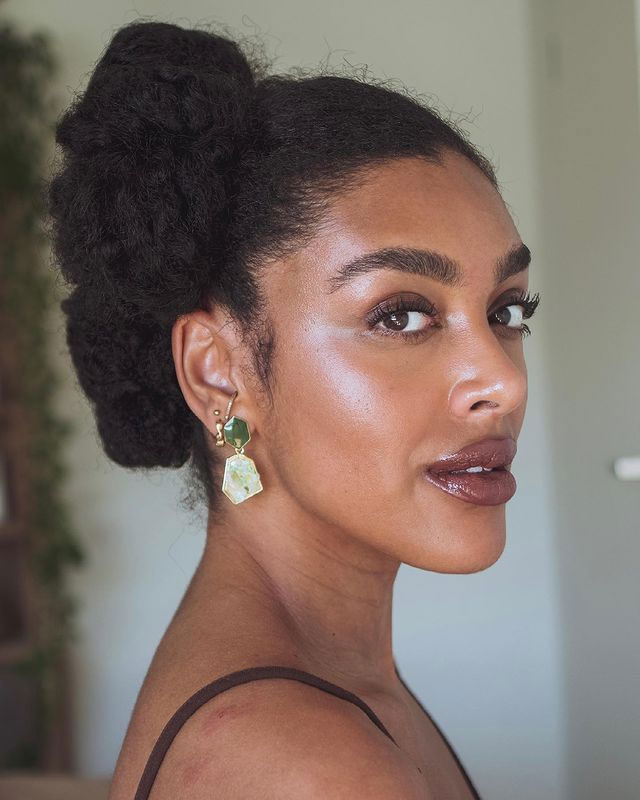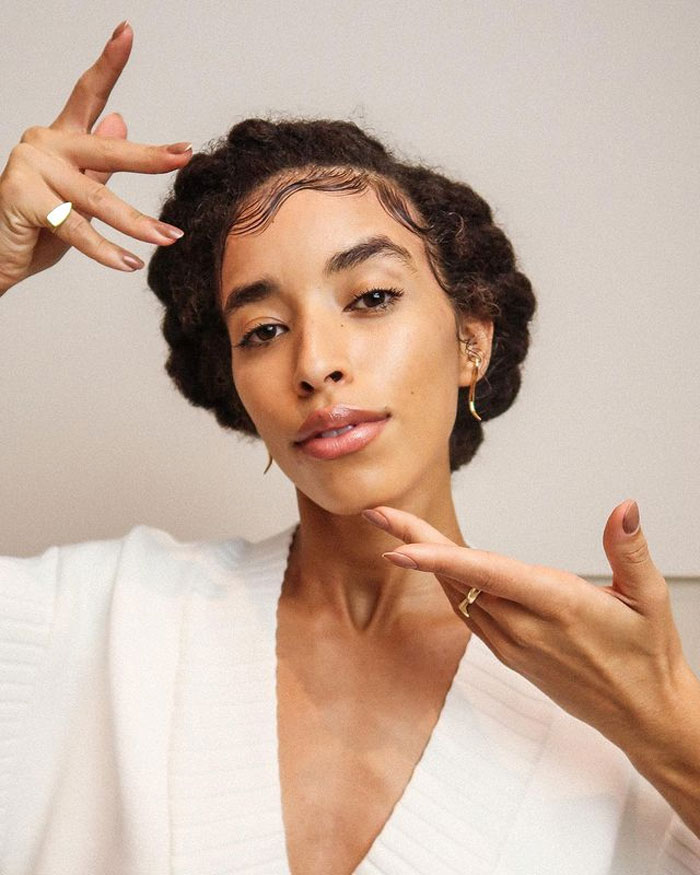Daily styling is incredibly overrated. It involves more frequent moisturizing, extra detangling, and, of course, more time set aside to do the style–and no one has time for that (or, at least, I don’t). That’s why every winter, those of us with textured hair find ourselves braiding, twisting, and cornrowing our strands into styles that look amazing and will last until we’re ready to take on curly hair maintenance again.
What is a protective style?

Image Source: @dr.kariwill
As a celebrity stylist, doctor of trichology, and the creator of goddess locs, Dr. Kari Williams explains that an official “protective style” is not just a style with hair extensions but a style that will last for two weeks or more. Adding extra hair for length can extend a style’s durability but requires care to avoid damage.
What are the downsides of protective styling?
Some of the most popular braided and twisted styles keep the ends of your hair tucked away but can cause problems at the roots and edges if they’re installed too tightly. Dr. Wiliams says this is where damage usually begins. “To prevent hair loss, it’s important to work with hairstylists who have been trained or certified in these styling techniques because a lot of damage to the scalp starts during installation. Additional prevention methods require the client to maintain their hair health by not pulling the extensions into tight styles and to get retouches around the hairline if individual extensions are worn for longer than four weeks.”
Image Source: @dr.kariwill
What if protective styling makes your scalp sore?

Image Source: @niani_b
If tender edges and a sore scalp caused by protective styling sound familiar to you, it may be time to try something new. As a general rule of thumb, a good protective style should be “comfortable, not just cute and trendy,” Detroit braiding specialist and founder of A Safe Space for Black Girls, Niani B., tells NaturallyCurly. “If it looks heavy, it likely is, and the heavy styles cause unnecessary tension.” And contrary to the popular belief that it’s normal for braids to be painful initially, both Dr. Williams and Niani note pain as one of the biggest red flags for scalp and hair damage, which should not come with the territory of protective styling.
“Your protective style should never be painful. There should be no wait period before your style becomes comfortable. Styles that pull at the edges are also very damaging,” Niani says.
To the list of telltale signs of damage, Dr. Williams adds “Visible tension or pulling of the scalp, scalp bumps or pimples (especially around the point of installation), redness or tenderness, round bulbs at the end of a hair strand (which is a sign of hair strands being pulled pre-maturely from the hair follicle), and most importantly pain–which is the body’s most important warning sign that damage is occurring.”
“If it looks heavy, it likely is, and the heavy styles cause unnecessary tension.” – Braiding specialist Niani B.
What are the best low-tension protective styles?
So what should you be looking for in a good protective style? Other than comfort, Niani explains that it should give you access to your scalp. “Keeping the scalp healthy is a major key in healthy hair care. Your protective style should not be keeping you from cleansing your scalp and moisturizing your hair,” she says. Two of Niani’s personal favorite low-tension styles that fit this criteria are knotless braids and two-strand twists.
Knotless Braids

Image Source: @hairrbydanielle_
“Some complain that they [knotless braids] don’t last as long as traditional braids, but that’s because less hair is added to the extension. With knotless braids, we have access to our natural hair while wearing the style. This can bring unwanted frizz, but that’s easy to work around, and now we can actually moisturize our hair and scalp.”
Two-strand Twists

Image Source: @msnaturalhairexpo
Two-strand twists also have the same perk of leaving room for scalp maintenance. “The twists are lightweight and flexible, allowing me the ability to style my twists pain-free. I also like that you have two styles in one, as right before wash-day you can take them down and rock a twist-out,” she tells us.
Take breaks between your protective styles
And one more pro-tip: taking breaks between protective styling is essential. “This gives you time to give your scalp a break from carrying any extra weight; it also gives you the ability to treat your hair, such as deep conditioning, etc.,” Niani says. People who wear back-to-back protective styles may notice the steady growth of their hair but should be wary of less density from thinning and breakage over time.
8 Low-Tension Protective Styles to Try
Read on for eight protective styling options that are cute, comfortable, low-tension alternatives to heavier protective styles.
1. Twisted Chignon

Image Source: @curlbellaa
If you need styling ideas that don’t take too long and look put-together but also keep the ends protected, this twisted look keeps it elegant and simple. The asymmetrical design stands out and achieves the perfect formal occasion or dinner look.
2. Crochet Locs

Image Source: @braidsandko
Crocheted styles are magical in the way they mimic box braids, passion twists, and goddess locs while causing less tension cutting hours from styling time. If you’re late to the game and don’t know about crochet, the hair is cornrowed and then the individual locs/twists/braids are looped into the cornrows using a hook. It’s genius. Pick up these butterfly locs from Toyotress Hair.
3. Two-Strand Twists
Image Source: @tommythecreator3
Not the best braider? Try this in lieu of individual braids. Two-strand twists are always cute, extremely versatile, and super easy to style and wash. The styling process can be time-consuming based on factors like hair density, length, and the size of the twists, but it’s usually worth it because they can be left in for a while due to the easy hair and scalp maintenance.
4. Clip-In Extensions
Image Source: @curlsbybebonia
Textured hair extensions give so much room for creativity. You can play with the length, curl patterns, and density to create just about any style. And they’re so easy to use that you can change them out frequently and get to your real hair and scalp if needed. Don’t forget to moisturize the clip-ins, too.
5. Braided Ponytails

Image Source: @naturalhairconnection
Why settle for one braided ponytail when you can have many? There’s no elaborate parting or braiding technique needed here, so this young, fresh look should be doable for just about everyone. Elevate the look with a few well-placed pins and clips.
6. Faux High Pony

Pictured: @todecrespa
Similarly to clip-ins, the faux ponytail is incredibly easy to install, and you can remove it as-needed. There’s little tension (but pay attention to how tightly you pull the ponytail) and your real hair stays braided or in a bun underneath–only one step added to your regular ponytail.
7. Halo Twist

Image Source: @kaluiise
Dress this look up or down, and you might even like the waves it leaves behind when you take it down. With less time focused on styling your hair, you can get a little fancy with the edges. Take a look at the Best of the Best edge controls for the most laid baby hairs.
8. Knotless Braids
Image Source: @bionic.hands
When you’re really all about braids, and you need an alternative to heavy box braids, your best friend will be knotless braids. A really on-trend look, but with less hair added in each braid, which equals less weight and less pulling on the roots.
What low-tension protective styles have you tried? Do you find tension to be an issue in your protective styling routine? Drop your comments below.
